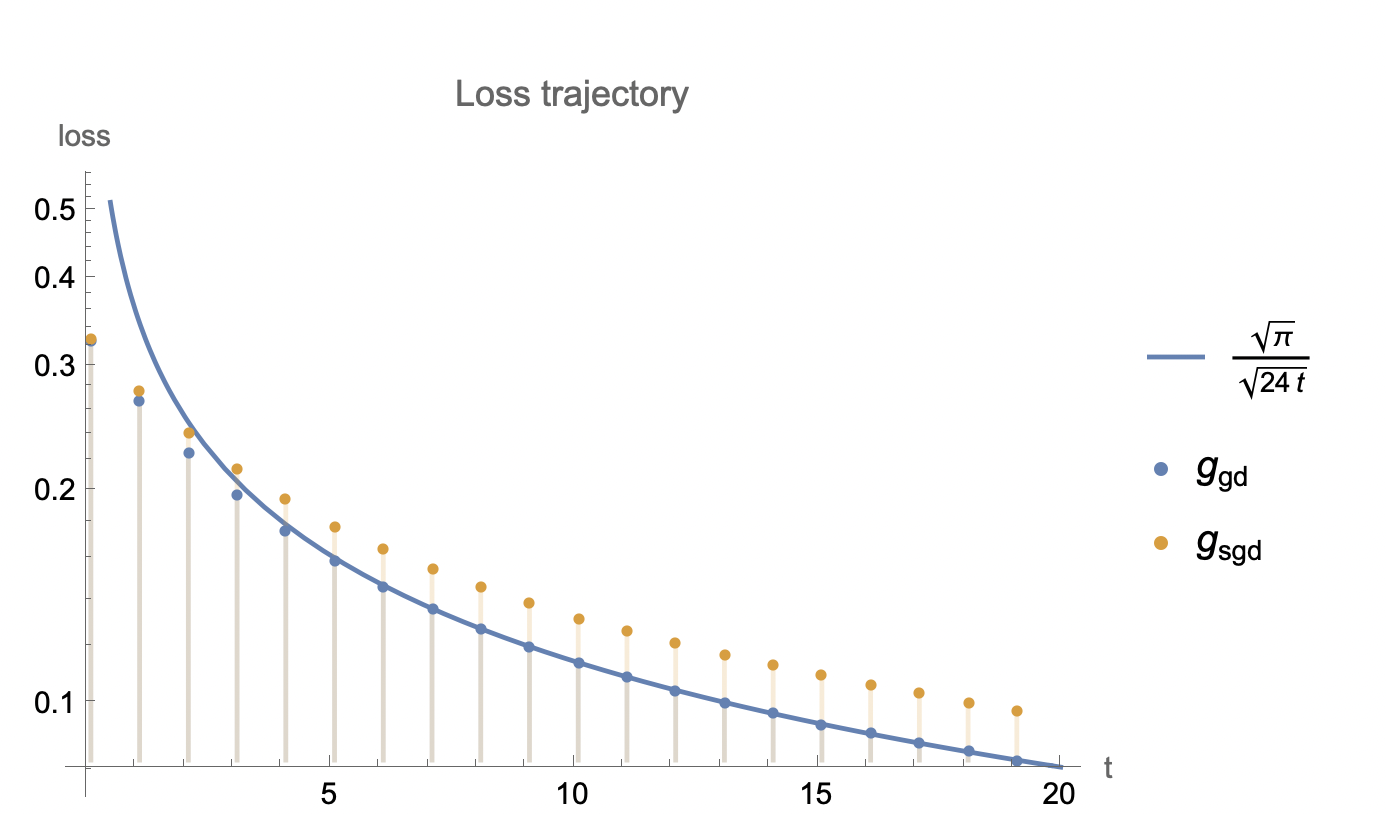Can anyone see how to get a tight upper bound for the function defined in terms of Inverse Laplace Transform below? $$g_\text{sgd}(t)=\mathcal{L}^{-1}\left[\left(\frac{s}{2}+\frac{5 \sqrt{\frac{2}{3}} \sqrt{s}}{2 \tan ^{-1}\left(\frac{\sqrt{\frac{2}{3}}}{\sqrt{s}}\right)}\right)^{-1}\right].$$
A closely related problem has a nice approximation, which I suspect is an upper bound, in plot below:
$$g_\text{gd}(t)=\mathcal{L}^{-1}\left[\frac{\pi -2 \tan ^{-1}\left(\sqrt{\frac{3}{2}} \sqrt{s}\right)}{2 \sqrt{6} \sqrt{s}}\right]\approx \frac{\sqrt{\pi }}{\sqrt{24 t}}.$$
These two functions describe loss trajectory for gradient descent (GD) and stochastic gradient descent (SGD) on a linear least squares problem with covariance eigenvalues $1,\frac{1}{4},\frac{1}{9},\dotsc$. Expressions come when treating GD/SGD as a continuous time problem which requires solving a particular differential equation .
Working hypothesis is that $g_\text{sgd}(t)<\frac{\sqrt{\pi }}{\sqrt{12 t}}$.

